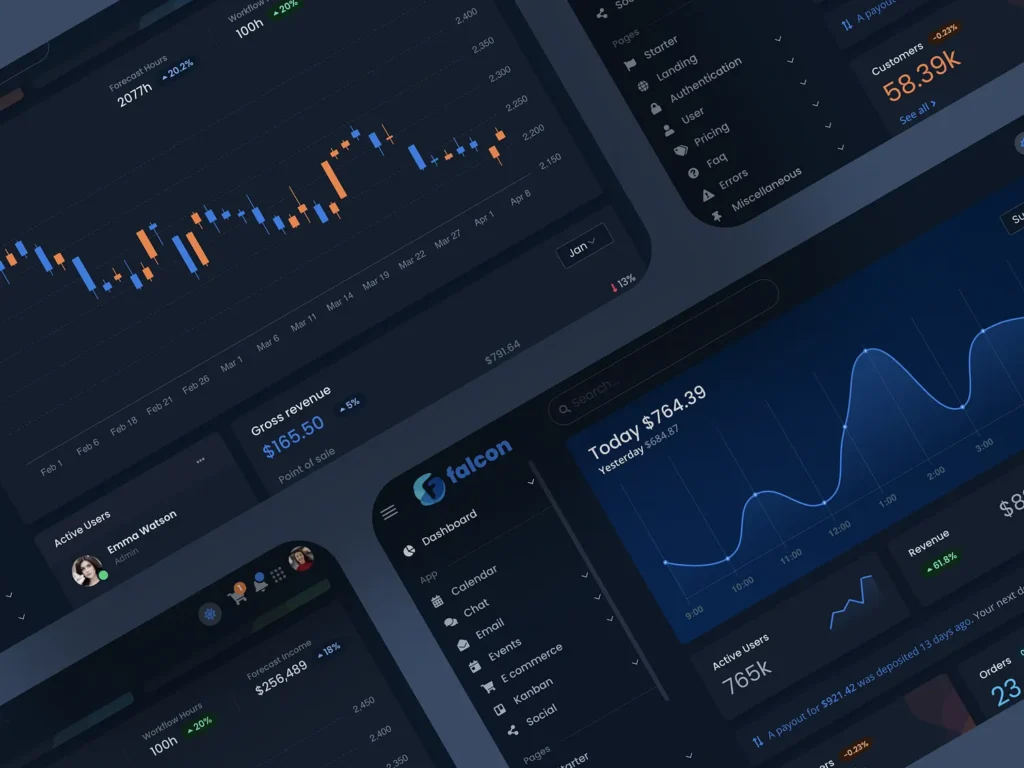In the realm of rapid UI/UX development, velocity without compromise is the new gold standard. At my AI consulting firm, we constantly push the boundaries of design tooling. One of our most powerful experiments recently? Connecting generative AI models directly to Penpot to automate a high-fidelity SaaS dashboard from structure to code.
This wasn’t just a design sprint—it was an AI-assisted warp jump from concept to client-ready prototype.
🔧 How I Connected AI to Penpot
Here’s a breakdown of the AI–Penpot bridge I built to enable fully automated design workflows:🧠 1. Prompt-Based Component Generation
Using GPT-4o, I generated JSON-style component blueprints by feeding targeted prompts like:
“Design a financial dashboard with a revenue chart, active users widget, left navigation, and a modern dark theme.”
These blueprints included element hierarchies, properties (colors, typography, spacing), and even responsive behaviors.
🧩 2. Converting AI Output into Penpot-Compatible Elements
Penpot supports SVG, CSS, and component libraries—so I created a translator script that:
-
Parsed GPT-generated layout logic into SVG containers
-
Mapped tokens and constraints into reusable Penpot components
-
Applied custom theming (Dracula-style dark palette with accent blues)
This automation turned abstract prompts into tangible, editable UI layers in Penpot with almost zero human drafting.
🔌 3. Live Preview with Data Bindings
To simulate a real dashboard feel, I wired Penpot elements to AI-generated dummy data, reflecting:
-
Revenue trends
-
Workflow hours
-
Forecast income
-
Real-time customer and order metrics
Even interaction states (like dropdowns and side menu toggles) were pre-wired with logic hints for frontend dev handoff.
🔄 4. From Penpot to Front-End Code
Once the layout was locked, Penpot’s export features and my AI assistant collaborated again. Using HTML/CSS + React export logic, I transformed the UI into production-ready front-end components. Minimal cleanup was needed—just plug into your preferred JS framework.
🚀 Results: A Workflow That Scales
-
Design Time Saved: ~75%
-
Frontend Handoff Time Cut: ~60%
-
Total Time-to-Prototype: Under 48 hours
-
Collaboration Bottlenecks: Eliminated via real-time AI–Penpot sync
This hybrid method is especially effective for MVPs, startups, and lean teams, where speed to user validation is everything.
💡 Why This Matters
You no longer need siloed designers, frontend devs, and product managers operating in parallel. With AI + Penpot, you can orchestrate UX, UI, and front-end logic from a single intelligent interface.
This isn’t just faster—it’s structurally smarter.
🧠 Key Takeaways for Fellow Architects & Strategists:
-
Use AI to generate layout logic and visual syntax, not just design ideas.
-
Translate these outputs into Penpot’s component system for scalable design ops.
-
Use data-driven prompts to align UI with KPIs, analytics, or forecasting logic.
-
Automate repetitive styling and responsive behaviors through theming templates.
Welcome to the new design ecosystem—one where your UX isn’t just intelligent. It’s AI-native.

